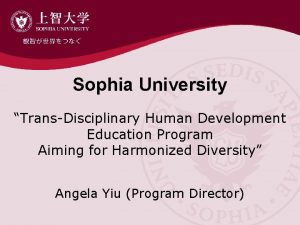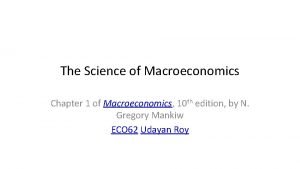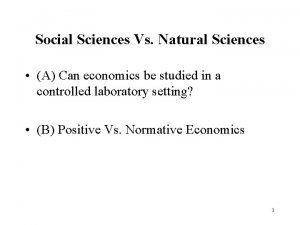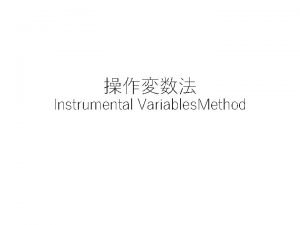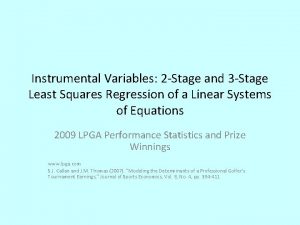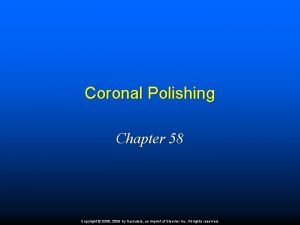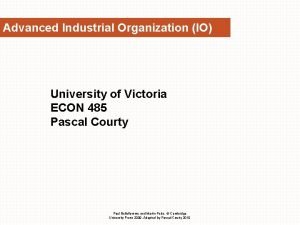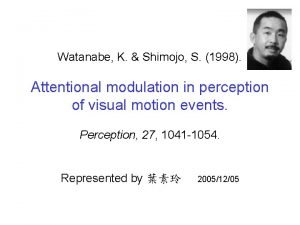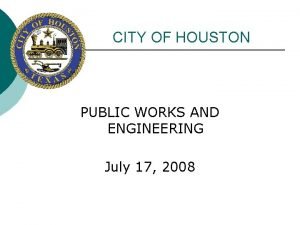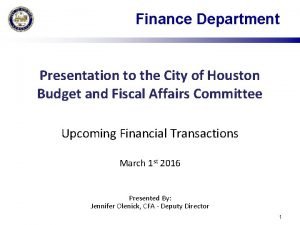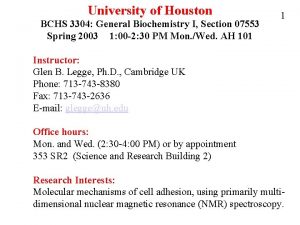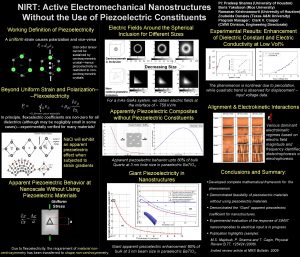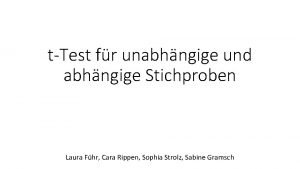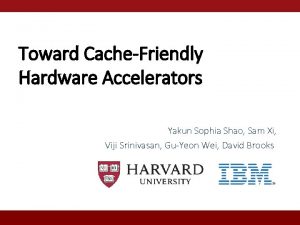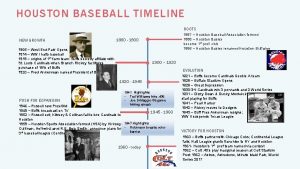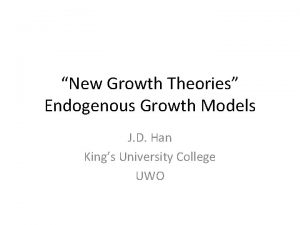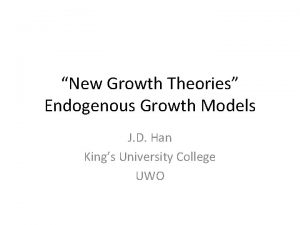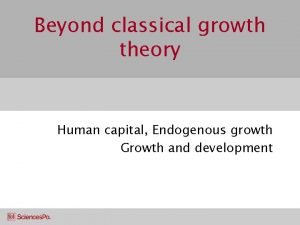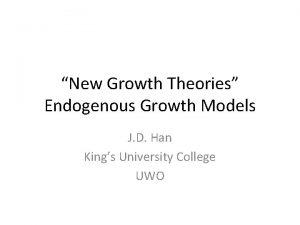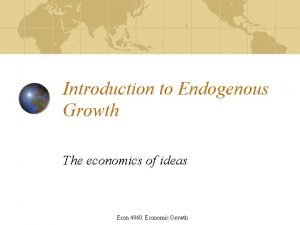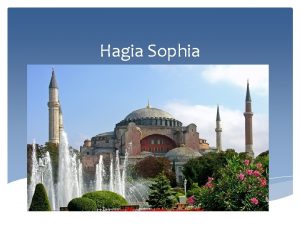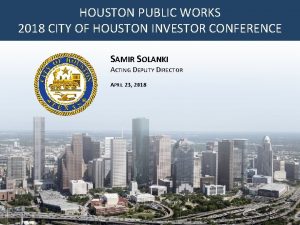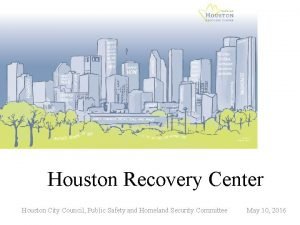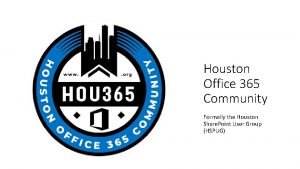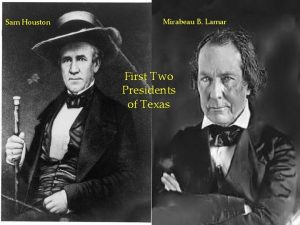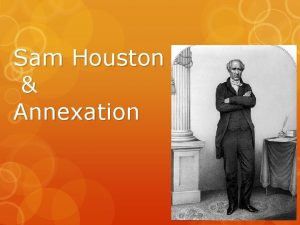University of Houston Economics Department Endogenous growth Sophia


























- Slides: 26

University of Houston Economics Department Endogenous growth Sophia Kazinnik

Neoclassical Growth Model vs. “New Growth Theory” A bit of background: The neoclassical growth model that we studies previously (Solow. Swan) provides important insights about growth, but also has serious limitations. • One of the limitations is that the long run rate of growth is determined outside of the model - exogenously. • As we have seen before, in neoclassical growth model, the steady state rate of growth will be driven by the rate of technological progress. • But what if we want to know what drives technological progress itself? • 2

Neoclassical Growth Model vs. “New Growth Theory” • A “new growth theory” (endogenous growth) was developed to extend neoclassical growth theory (exogenous growth). It extends the neoclassical growth model to allow for endogenously driven growth (Romer, Lucas). • Today we will look at couple of core models underlying this research. 3

AK model - preliminaries Consider the following model: • Closed economy, no technological progress, population size is fixed. • Production function of the form: • Depreciation is enclosed in A. • Production function is CRS at the firm level. • Capital can be transformed into consumption with no cost. 4 4

AK model The infinitely lived representative consumer-manager has preferences given by: As usual, we can derive the Euler equation, in which equilibrium per capita consumption obeys: Now lets determine the equilibrium in this model. 5

AK model - equilibrium We know that in each period t firms invest up to the point where the net marginal product of capital equals the interest rate: Finally, the model is closed by the goods-market equilibrium condition: Equilibrium? 6

AK model - equilibrium We can see on the graph how the equilibrium is determined: 7

AK model - solution Results? We can see that the equilibrium growth is constant through time and is determined by the intersection of the two curves we’ve seen in the previous slide. This intersection yields: This is the rate of consumption growth in equilibrium. We must assume the following condition : Otherwise, in equilibrium, we will gradually “eat” our capital away. 8

AK model - conclusion In conclusion: • The rate of consumption growth is “g bar”. • In equilibrium, per capita investment is: • And since we can see that the level of consumption in equilibrium will be: • We can see that in this model (as opposed to the neoclassical growth model) a change in the saving rate (beta) now has a permanent effect on the rate of growth of the economy (the higher the beta, the higher the growth rate). 9

“Learning by doing” model Consider now “learning by doing” variant of the model: Suppose that consumption is still characterized by the Euler equation from the previous model (meaning utility function and BC are same). However, each firm’s j’s output is given by: where the “first” k is the individual firm’s level of capital per worker, and “second” k is the economy-wide average level of capital per worker. 10

“Learning by doing” model - We can see that in this model each individual firm faces diminishing returns to it’s own investment, but production function is CRS in “first” and “second” k together. Reason for this: production process generated knowledge externalities. The higher the average level of capital intensity (k) in the economy, the greater the incidence of technological spillovers that raise the marginal productivity of capital throughout the economy. 11 11

“Learning by doing” model Individual firm views the marginal product of its own investment as: OR (Given the fact that in equilibrium : and that net marginal product of capital must equal interest rate ) An individual’s inter-temporal optimal consumption allocation is still characterized by the Euler equation: Equilibrium? 12

“Learning by doing” model: equilibrium We can see on the graph how the equilibrium is determined: 13

“Learning by doing” model: conclusion Results? The steady state rate of growth of the economy is: As before, the economy adjusts immediately to its steady-state equilibrium growth path. Once again, we impose the restriction: 14

AK vs. “learning by doing”: Notice that the equilibrium growth rate and the market interest rate (r) are lower here than in the AK model. Why? Because individual firms do not internalize the “learning by doing” externality their investment produces for other firms. Hence, this equilibrium is not Pareto Optimal. 15 15

International Capital Market Integration International capital market integration can raise the level of world output by allowing capital to migrate toward its most productive global uses. Here, we will use a stochastic version of the AK model to illustrate how world capital market integration can raise steady-state growth. We will start with the closed economy in investment autarky. 16

International Capital Market Integration Suppose that the representative agent has an infinite-horizon Expected utility function: And we normalize the population to 1. As in AK model, we assume linear technology; CRS in capital at the firm level. What is different? 17

International Capital Market Integration But in this model there are two types of capital instead of one: 1) The first type offers constant risk-less return (1+A) per unit invested (by the previous logic, the gross risk-less interest rate is r). 2) The second type offers a risky return (1+ “r tilde”) per unit of capital invested on date t. “r tilde” is i. i. d random variable, such that it’s expected return is bigger than r - the gross risk-less interest rate. 18 18

International Capital Market Integration Let K denote the total amount of capital, both safe and risky, accumulated by end of period t-1. Capital is the only source of income in the model, so the representative agent’s period budget constraint is: where x denotes the end-of-period t-1 share of capital invested in the risky asset. How is this share determined? 19

Optimal Consumption and Portfolio Shares The first order conditions for this problem will yield two Euler equations: And we know that the level of consumption is defined by: We can linearize the second Euler equation and combine it with first to yield: 20

Optimal Consumption and Portfolio Shares Now, we want to get rid of K’s and express consumption: Substituting this into: Yields: 21

Optimal Consumption and Portfolio Shares And solving for x: Naturally, the share of risky capital is positively related to expected return differential and negatively related to the variance of the risky return. 22 22

Optimal Consumption and Portfolio Shares Having solved for x, we can find the economy’s expected growth rate of consumption growth: Expected consumption growth rate is a decreasing function of the variance of the risky return. 23

Closed Economy vs. Open Economy Now, lets extend the analysis to an open - economy setting: -assume all countries have the same preferences and technologies, but the returns to risky projects are imperfectly correlated internationally. -individuals will hold the same portfolio (same log preferences) -risky capital has the same mean rate of return for all countries n: 24 24

Closed Economy vs. Open Economy Following the same steps that we just did, we find: Since the world portfolio of risky capital is globally diversified: It follow immediately that expected consumption growth under capital market integration (first equation in this slide) will be higher than under autarky. Logic: the opportunity to diversify their portfolios induces people to allocate a larger share of wealth to risky assets. Hence, expected growth rises. 25

Comments? Questions? 26
 Neoclassical growth theory vs. endogenous growth theory
Neoclassical growth theory vs. endogenous growth theory Houston isd foundation houston, tx
Houston isd foundation houston, tx Maastricht university economics and business economics
Maastricht university economics and business economics Holy sophia university
Holy sophia university Endogenous variables
Endogenous variables Endogenous vs exogenous
Endogenous vs exogenous Ivreg2 stata
Ivreg2 stata Endogenous variables
Endogenous variables Copyright
Copyright Difference between endogenous and exogenous
Difference between endogenous and exogenous Endogenous attention
Endogenous attention City of houston department of public works and engineering
City of houston department of public works and engineering City of houston finance department
City of houston finance department University of houston biochemistry
University of houston biochemistry Pradeep sharma university of houston
Pradeep sharma university of houston Elements of mathematical economics
Elements of mathematical economics Growth analysis definition
Growth analysis definition Shoot system
Shoot system Growthchain
Growthchain Primary growth and secondary growth in plants
Primary growth and secondary growth in plants Vascular ray
Vascular ray Geometric exponential growth
Geometric exponential growth Organic growth vs inorganic growth
Organic growth vs inorganic growth Growth management
Growth management Hagia sophia
Hagia sophia Abhängiger t test
Abhängiger t test Sophia shao
Sophia shao



